Korean universities' Green Campus Movement to prevent climate change
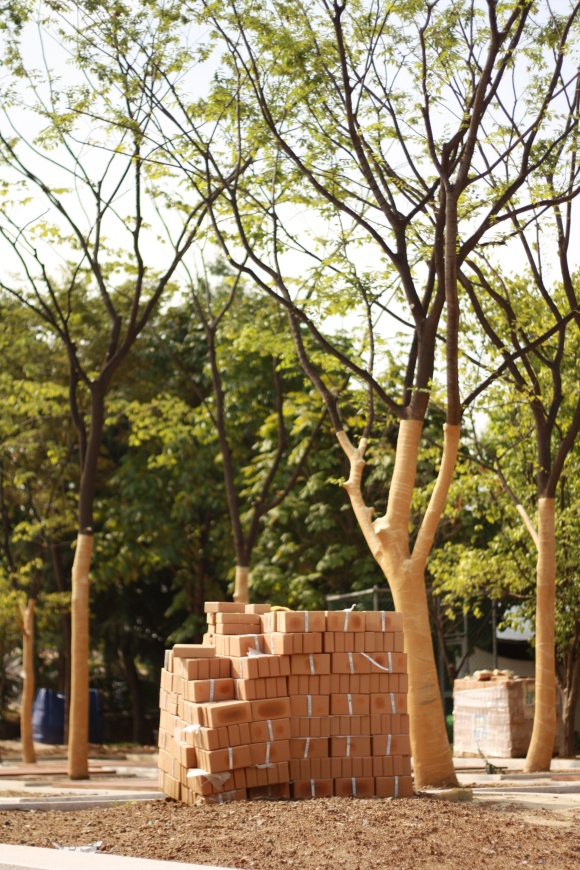
THIS DECEMBER, the United Nations Climate Change Conference will be held in Copenhagen, Denmark. Post-Kyoto Protocol negotiations will take place at this conference, making developing countries play a greater role in reducing greenhouse gases (GHG) emissions. Korea, which showed the greatest increase among OECD countries in GHG emissions between 1990 and 2005, is also certain to be obliged to reduce GHG starting from 2013. As global regulations on the use of fossil fuels become stricter, various sectors of society, including corporations and universities, are moving towards ecological responsibility. Yonsei Univ., which is one of the largest consumers of energy among universities in Korea, is about to take the lead in the Green Campus Movement to meet society's expectations and prepare for the government's new plan for achieving "low carbon and green growth."
The necessity of the Green Campus Movement
A university, like most large organizations, consumes a substantial amount of energy, since many buildings and facilities for lectures, research, and housing are concentrated in a limited area. The main types of energy used are electricity, city gas, and water. Shin Eui-soon (Prof., Dept. of Econ., Yonsei Univ.), who was elected last year as the first president of the Korean Association for Green Campus Initiative (KAGCI), says, "Yonsei Univ. pays about ₩8.4 billion annually for these three types of energy." According to a report from the Korean Federation for Environmental Movement (KFEM), the total annual energy consumption by Korean universities increased by 84.9% from 2000 to 2007. During the same period, the nationwide rate of increase was 22.5%, less than a third of the rate for the universities. The report also says that 23 universities were included in the top 190 energy-consuming organizations in Korea.
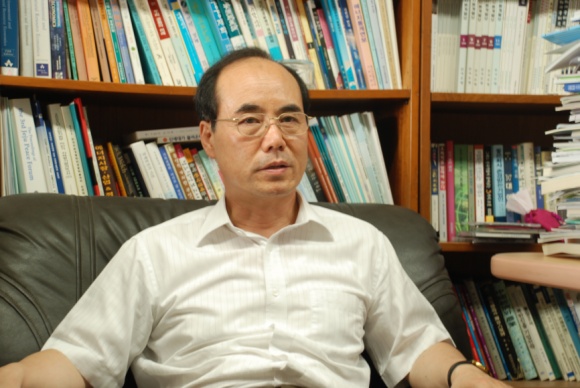
In 2006, Yonsei Univ. ranked fourth in energy consumption among Korean universities, following Seoul National Univ. (SNU), Pohang University of Science and Technology (POSTECH), and Korea Univ. With increasing awareness about this pressing issue, Korean universities are realizing the necessity to cooperate and share ideas for reducing energy consumption. Meanwhile, Yonsei Univ. took the initiative last November, and the KAGCI was founded, which has a current membership of 35 universities.
Current proceedings
On May 13 of this year, presidents and vice-presidents from 28 Korean universities gathered at Yonsei Univ.'s natural forest, Chungsong-dae, to declare the start of the Green Campus Movement. With the presence of ministers from the Ministry of Education, Science and Technology and the Ministry of Environment, the presidents presented a blueprint for the Green Campus Movement at the meeting. They said universities will make campuses greener by controlling the annual amount of energy used and carrying out plans for a step-by-step reduction of CO2 emissions. They also declared that they would make a "Car-free Campus" and encourage faculty and students to ride bicycles on campus.
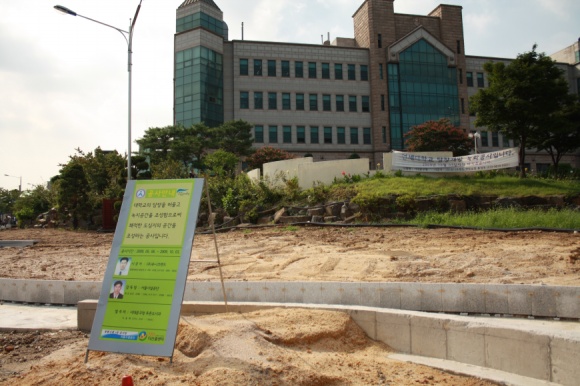
In Yonsei Univ. a solar battery generator is built on the roof of the Engineering Hall as part of the effort to make the campus more eco-friendly. "Although the amount of electricity produced by the solar generator is not enough to meet the overall consumption of the building, it has an educational meaning to the students. Moreover, the use of renewable energy on campus is going to increase," adds Shin.
Recently, the fences around the Main Gate were removed, and a tree-planting project is in progress with the support by Seoul City. Foresting can lower the density of CO2, and contribute to curbing air pollution around the Shinchon Campus. The automatic light switch system, which turns itself on and off by sensing the presence of people, is in trial operation in the restrooms in Baikyang Hall. Another goal of the Green Campus Movement is to cultivate future leaders who are aware of current environmental problems, and therefore pursue a society based on sustainable development. In order to provide proper education to produce such environmentally-aware future leaders, Yonsei Univ. offers courses like Life in Harmony with the Environment as part of its liberal arts education, and even more courses on the environment will be provided in the future.
Exemplary universities in the Green Campus Movement
While Yonsei Univ. recently took the lead in integrating the environmental movements that each university was carrying out independently, some universities have already made substantial progress in creating eco-friendly campuses that serve as good role models for those that are aiming to reduce their energy consumption.
SNU
Rainwater utilization system: established in 2003 at dormitories for graduate students and lecture buildings

- When it rains, a device on the roof collects rainwater and carries it to storage tanks or piggy tanks located either under or beside the buildings. Harmful substances like lead or mercury are filtered out in the tank and water is supplied to rest rooms or the nearby gardening areas.
- Self-sufficiency rate of restroom water: over 60% (saves several million won of water charges a year)
"The system also prevents underground water from drying up and can even substitute for dam constructions. Therefore, it can help preserve the overall ecosystem and contribute towards "low carbon development."
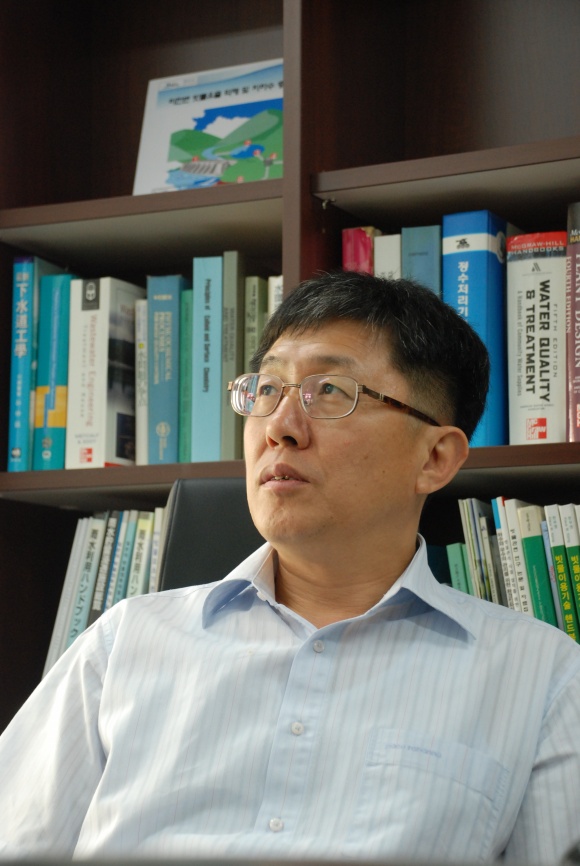
Han Moo-young (Prof., Dept. of Civil & Environmental Eng., SNU)
Sangji Univ.
Renewable energy facilities: established in 2002 for nine buildings, including the dormitory and the research center for professors
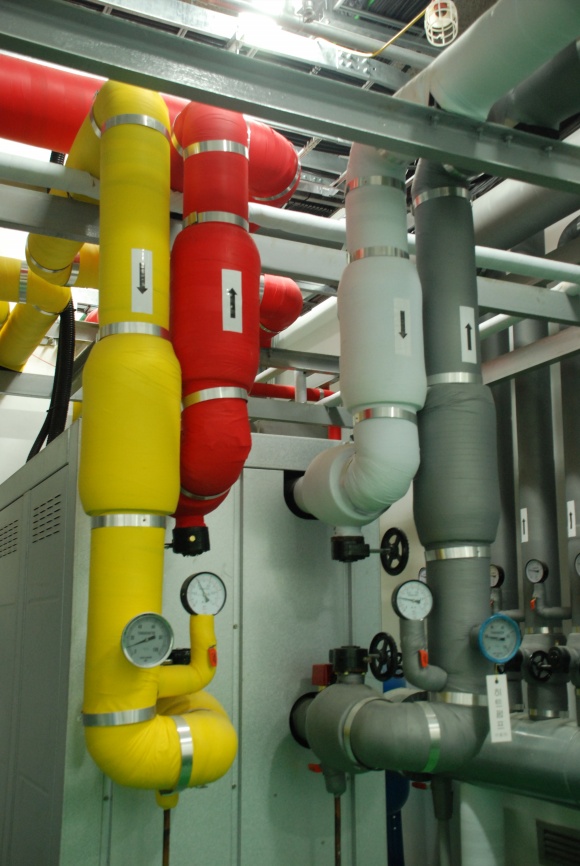
- Some of them allow the school to obtain energy from terrestrial heat and sunlight.
- All of the energy used for air-conditioning and heating buildings are supplied by geothermal generators. (saves ₩300~400 billion a year and reduces CO2 emissions by 70~80%)
"Eco-curriculum" Subjects related to environmental issues are established in every major and the liberal arts The money saved is being used to invest in building other facilities and providing organic rice, eggs, meat, and vegetables in the student cafeteria.
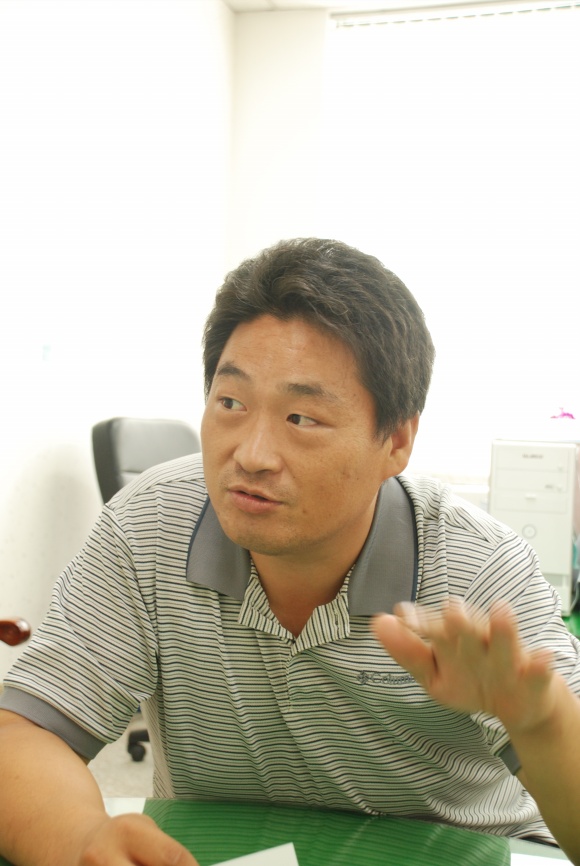
Yeon Ho-sun (Chief, Office of Facilities, Sangji Univ.)
Chosun Univ.
Green Village: A housing area built in 2005 that can accommodate about 500 foreign students and professors

- Self-supplies 75% of its overall electricity and hot water by using sunlight and solar heat generators
Hydrogen fuel batteries at Chosun Univ. Hospital: produces electricity by extracting hydrogen from city gas and making it react with oxygen in the air.
- The amount of electricity generated: 1.75 million kW a year (approximately ₩175 million)
"The Green Campus Movement can be realized only when both the public and the private sectors work together to support universities. Meanwhile, universities can start with small changes such as switching to a lighting system which consumes less electricity in lecture rooms."
Cho Geum-bae (Prof., Dept. of Electrical Engin., Chosun Univ.)
What can Yonseians do for a greener campus?
1. Turn off electric lights when leaving lecture rooms and seats at study rooms of the library.
2. Sort garbage according to type.
3. Ride bicycles or walk on campus instead of using motorcycles or scooters.
4. Use personal spoons, chopsticks, and tumblers in dongahree rooms.
5. Maintain indoor temperatures at a moderate level: 26~28℃ in the summer and 18~20℃ in the winter.
6. Turn off the tap water so that water does not drip when not in use.
Environmental movements by students
Students of Sookmyung Women's Univ. carry out energy-saving activities through the Campus Watch program. Green Snow, a self-governing student body that volunteers for environmental movements, monitors electricity use in lecture rooms throughout the campus. Three times a week, members of Green Snow form a group of two and check if electric lights and beam projectors are still turned on after 8 p.m.. "As more and more students take interest in our activities and encourage us, we feel a great sense of pride. Moreover, the amount of leaking electricity has decreased compared to three years ago when we first started the Campus Watch program," says Choi Yu-jin (Leader, Green Snow, Sookmyung Women's Univ.).
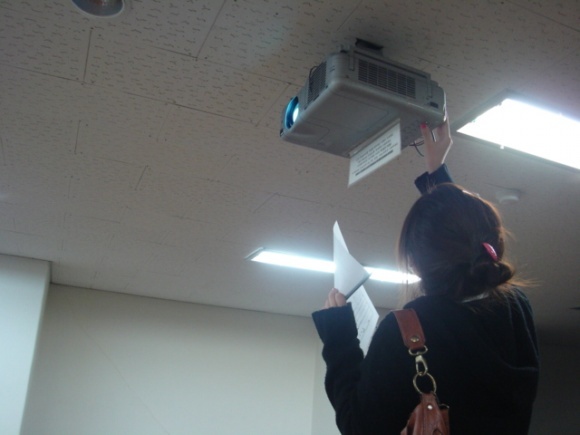
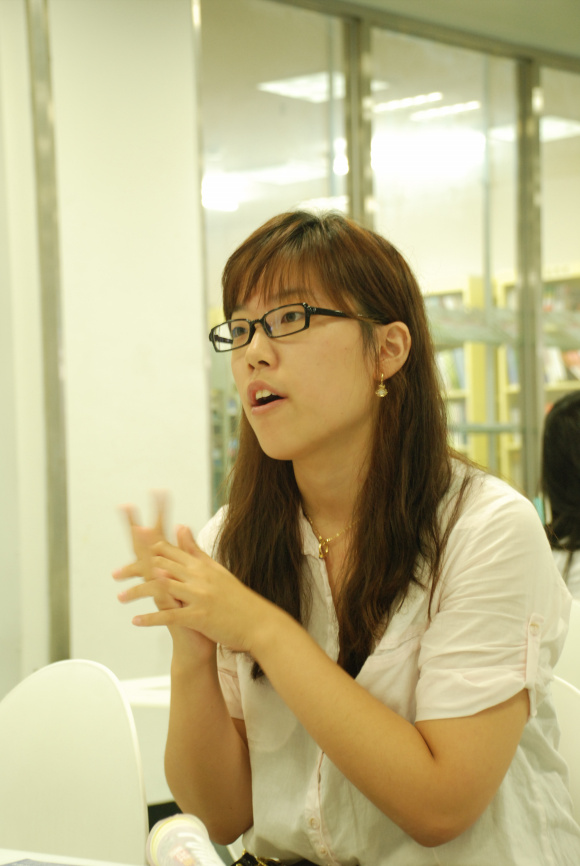
Yonsei Green Club, the only main dongahree engaging in an environmental movement in our university, opens "Green Food Caf? during the Daedong Festival. At the food caf? members of Yonsei Green Club sell bread and tea made out of organic ingredients, which are free from chemical fertilizers and insecticides. In November, they also hold environmental campaigns and conferences publicizing the severity of environmental destruction. Lee Jae-hyung (Leader, Yonsei Green Club) says, "Yonseians have few chances to think about how environmental problems relate to themselves and how they can contribute to creating a sustainable society. However, it is necessary for university students to have a sense of responsibility for the problems we face now."
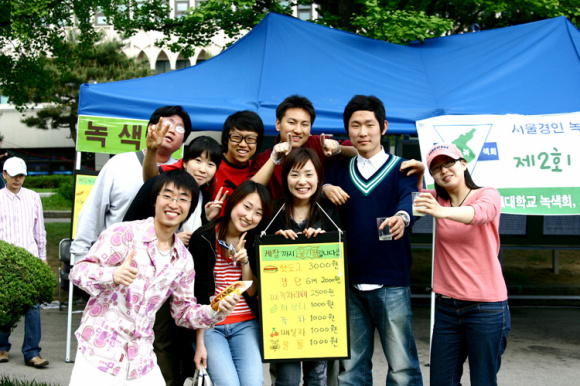
For a brighter future
Since Korean universities can no longer remain indifferent to the unprecedented scale and speed of global warming, the Green Campus Movement should not end with a temporary event or be misused as a means of advertisement. For truly satisfactory results, each university needs to set specific goals for saving energy and to announce an official target. In the case of the United States, the American College & University Presidents' Climate Commitment (ACUPCC) urges its member universities to implement a "climate neutral plan" which includes a target date and interim milestones for minimizing GHG emissions.
Just creating visually "green" campuses by planting trees or decorating campuses by gardening should not be the essence of the Green Campus Movement. Universities should make long-term and practical efforts, from introducing renewable energy facilities to expanding courses promoting environmental understanding. Nevertheless, school authorities should be considerate when executing the budget because part of the investment cost for a greener campus is paid with students' tuition. "Although the intention of the Green Campus Movement is good, the high cost of building new facilities and the uncertainty of the amount of profit that can be gained through it should be considered. Also, students have a right to be informed about the school's policy as members of the university," says Jung Woo-chul (Fresh., Col. of Medicine, Yonsei Univ.).
The function of KAGCI, which took its first step last year, should be strengthened to create a synergy effect through a joint effort by universities and to avoid overlapping investment in technological development. Shin Eui-soon (Pres., KACCI) says, "Through cooperative research and sharing ideas, each university can find the most suitable policy that fits its unique condition." In addition to collaboration with other universities, school authorities should form a closer relationship with relevant ministries such as the Ministry of Environment and the Ministry of Education, Science and Technology to receive financial support.
* * *
With the start of the Green Campus Movement, the school authorities started to take a more responsible attitude toward climate change and environmental protection. Meanwhile, the students of Yonsei Univ. seem to be relatively lukewarm about saving energy in their daily lives or participating in environmental movements in a more organized way. As Green Snow, the student club of Sookmyung Women's Univ., shows, students' consistent efforts can bring a ripple effect to the whole campus. It is time for Yonseians to take a great leap forward towards a greener campus, and show an effort befitting their talents.

